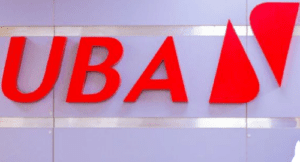


Bank transfer levy: FG generates N78bn from Nigerians in five months
By Seun Ibiyemi
The government has collected a total of N78.95 billion from the N50 levy imposed on electronic bank transfers within the first five months of 2024.
Analysis of the Federal Allocation Accounts Committee report released by the National Bureau of Statistics showed that 36 state governments received a total allocation of N31.84bn from January to April.
The EMTL was introduced in the Finance Act 2020, which amended the Stamp Duty Act to tap into the growth of electronic funds transfers in the country.
The levy is imposed as a singular and one-off charge of N50 on electronic receipt or transfer of money deposited in any deposit money bank or financial institution on any type of account on sums of N10,000 and above.
Revenue derived from the EMTL is shared among the three tiers of government based on derivation, with the Federal Government receiving 15 per cent, state governments receiving 50 per cent and local governments getting 35 percent.
The report indicated that the government got N15.9 billion in January, N15.15bn in February, N14.75 billion in March, N18 billion in April and N15.14 billion in May.
A breakdown of the federal allocation also showed that N8.93 billion in January, N7.96bn in February, N7.58 billion in March, and N7.38 billion in April were shared among the states from the bank transfer levy.
Further analysis showed that Abia State got N797.79 million, Adamawa (N729.16 million), Akwa-Ibom (N796.81 million), Anambra (N1.03 billion), Bauchi (N818.98 million), Bayelsa (N607.2 million), Benue (N805.76 million) and Borno (N811.03 million).
According to the 2023–2025 Medium Term Expenditure Framework and Fiscal Strategy Paper, the government projected to make at least N137.03 billion in 2023, N157.59 million in 2024, and N189.11 million from EMTL.
In 2023, digital banking channels brought in roughly N438 million for 10 financial institutions, rising by 37.54 percent from N318.64bn in the previous year, an analysis of their annual reports showed.
These channels include mobile applications, USSD channels, automated teller machines, agency banking, internet banking, point-of-sale payments, as well as credit and debit card transactions.
In an earlier interview with journalists, the Head of Corporate Communications, NIBSS, Lilian Phido, said, “It is very clear that more and more people are accepting the channels of payment that are available and the platforms are stable.
“With stability, these components have grown. With stability, more and more people are moving.”



